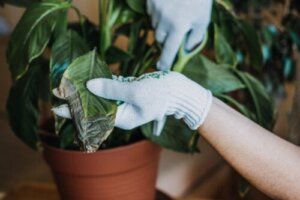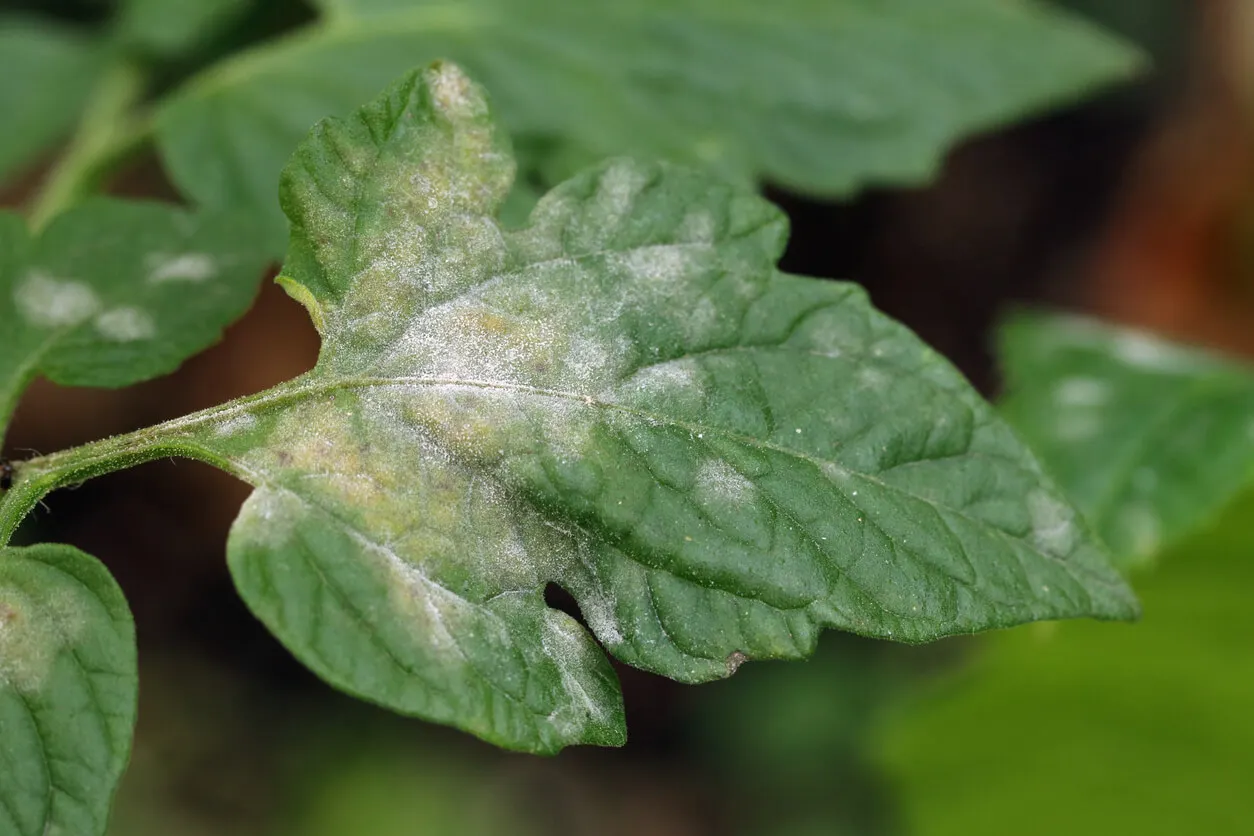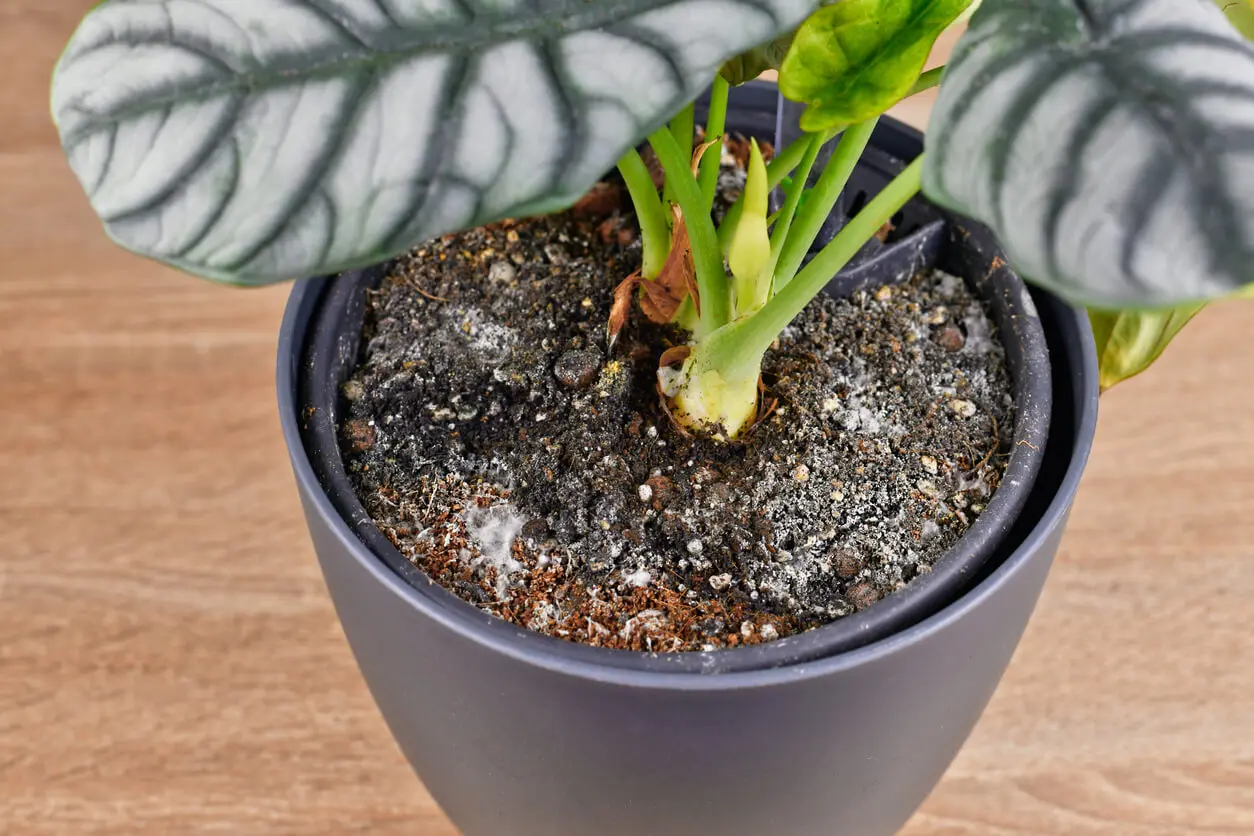3 Effective Tips to Keep Your Houseplants Fungus-Free

To keep your houseplants fungus-free, you need to take preventive care or act immediately, as soon as you notice changes in the plant. It’s the confinement of these plants that creates the conditions for these problems.
But how to do it? In this article, we’ll share some tips and recommendations. But, before getting into the matter, it’s good to know which are the common fungi in this kind of plant and the signs that will alert you to their presence.
Types of fungi common in houseplants
Since they’re plants that are kept inside the house, microorganisms develop in the pots due to the accumulation of moisture in the substrate and the mixture of spores and soil. Little by little, they gradually attack the leaves, stems and roots.
It’s true that some indoor plants are placed on balconies or terraces, but others are in closed rooms, where conditions may work against them. The consequences are wilting or death.
But which fungi attack plants?
- Botrytis: This is a gray, hairy mold, a product of cold and excessive humidity, which usually damages older plants.
- White mold: This is known as Sclerotinia spp. Although it’s said not to be too serious, it’s a warning that the species isn’t having its needs met.
- Rust: This is a plant disease that’s typical of humid environments. The leaves look yellowish, brown, or even black. In addition, the back of the leaves show micro-bulges. Although the plants that host these parasites rarely die, their appearance is greatly affected.
- Downy mildew is the fungus that’s evident on the upper sides of leaves. They’re whitish, powdery-like spots that also spread to young stems, fruit, and flowers, causing them to stunt and drop. This coating is composed of mycelium and colorless spores, all similar to a mealy coating.
- Negrilla: Another name is “fumagine” and it manifests itself as a black powder that weakens vegetation, both indoors and outdoors. Its consequence is the hindering of the passage of light, which affects photosynthesis.

Tips to keep your houseplants free of fungi
Knowing what these microorganisms look like makes it easier to detect and combat them. To keep your houseplants fungus-free, it’s advisable to put into practice the following recommendations.
Read more: How to Eliminate Cottony Mealybugs from Your Plants
1. Spray natural fungicides
Natural remedies are advantageous both for the plant and for those who live with them. By using these products, you aren’t exposed to chemical odors and their possible adverse reactions.
Some studies on the antifungal activity of natural extracts, such as those reviewed in the magazine Saber, highlight that fungicides prepared with Melissa officinalis inhibit the growth of the fungus Aspergillus flavus.
Among several possible ingredients, milk, ginger, and mint are good choices. Other effective natural fungicides to keep houseplants fungus-free are the ones we’ll now reveal.
Garlic solution
Garlic, powdered or crushed, and poured in a liter of water is one of the recommendations against mildew or powdery mildew. The essence of these bulbs is allicin, linked to antimicrobial and antifungal properties.
In turn, the National Institute of Agricultural Technology (article in Spanish) in Argentina, highlights garlic as an insect repellent with antifungal properties, ideal for combating fungi in plants.
Vinegar and water mixture
According to a publication by Postharvest Biology and Technology, bamboo vinegar fused with peach gum is effective in controlling gray mold. Although the experiment was carried out on blueberry plants, it’s possible to replicate it on ornamental species.
With regard to vinegar as a fungicide, the International Journal of Molecular Sciences investigated the efficacy of wood vinegar against Botrytis cinerea. In their tests, they found that the dilution of pyroleanic acid inhibits the growth of the fungus, suggesting that this substance could serve to protect plants from pathogenic attacks.
The purpose of the acid is to modify the pH of the microorganisms. Infusions for this purpose contain at least 3 tablespoons of vinegar in 1 liter of water.
Baking soda
Combine 1 tablespoon of baking soda with ¼ gallon of water and spray the solution on the leaves, top, and bottom. It’s a home recipe with positive effects against fungi.
In fact, research (article in Spanish) reviewed by the Revista Mexicana de Ciencias Agrícolas analyzed the effectiveness of potassium bicarbonate as a fungicide. In the experiment, they mixed this substance with potassium phosphite and found a significant reduction in the incidence and severity of downy mildew.
2. Remove diseased leaves
Cutting off diseased leaves is the quickest and most obvious way to keep your houseplants fungus-free. Use garden shears, cut off the infected parts, and discard them. Remember to disinfect the tool before and after use, as well as wearing gloves while holding them.
Know more: Six Cinnamon Benefits for Plants
3. Change pots
Just as removing leaves is a good way to get rid of fungus on houseplants, moving them to another pot is also an excellent option. Transplant them and get new soil.
Before planting, be sure to clean the specimen well, from the leaves to the roots. If you spray fungicide at the base of the pot, the mold spores won’t spread again.

What to do after eliminating fungi in indoor plants?
Once you have finished disinfecting the plant, look at adapting their environment to benefit their health. That is, place the species in an area where it receives sufficient ventilation and light; both conditions will help it to grow. Make sure there are no other plants nearby, at least for a while.
Likewise, check that the pot drains the water properly and that it’s clean. Water them in the mornings, because at night the soil takes longer to dry. With all these recommendations, you’re sure to keep fungi at bay and your houseplants will thrive.
All cited sources were thoroughly reviewed by our team to ensure their quality, reliability, currency, and validity. The bibliography of this article was considered reliable and of academic or scientific accuracy.
- Briseño Sara, et. al. (2013). Actividad antifúngica y antiaflatoxigénica de extractos de Melissa officinalis (LAMIACEAE) sobre Aspergillus flavus. Saber, 25(2), 185–192. https://www.mendeley.com/catalogue/8511dfb2-82df-3653-b3d7-2b93d28c4a8f/?utm_source=desktop&utm_medium=1.19.4&utm_campaign=open_catalog&userDocumentId=%7Bd2e50db6-5071-42a1-9890-ae8818ec1533%7D
- Delucchi, A., Zapata, R., & Quiroga, M. (2012). Uso de productos naturales alternativos para el manejo sustentable de Oidium sp. Avances En Energías Renovables y Medio Ambiente, 16, 113–120. https://www.mendeley.com/catalogue/fa6e506d-2570-35d6-b28f-36d33cfc991e/?
- Juárez-Segovia, K.G., Díaz-Darcía, E.J., Méndez-López, M., Pina-Canseco, M.D., Pérez-Santiago, A.D., & Sánchez-Medina, M.A. (2019). Efecto de extractos crudos de ajo (Allium sativum) sobre el desarrollo in vitro de Aspergillus parasiticus Y Aspergillus niger. Polibotánica, 47,99-111. https://www.semanticscholar.org/paper/EFECTO-DE-EXTRACTOS-CRUDOS-DE-AJO-(Allium-sativum)-Ju%C3%A1rez-Segovia-D%C3%ADaz-Darc%C3%ADa/9f4bfb3e0f48ca8457f3cb5d5f261b9272b29026
- Guerra, F., & Pescio, F. (2020). El ajo como repelente de insectos. Instituto Nacional de Tecnología Agropecuaria. https://inta.gob.ar/noticias/el-ajo-como-repelente-de-insectos
- Mildiu polvoriento. (s.f.). Extensión de la Universidad de Illinois. Consultado el 11 de abril de 2023. https://web.extension.illinois.edu/focus_sp/pm.cfm
- Pertile, G. y Frąc, M. (2023). El efecto antifúngico del ácido piroleñoso sobre el hongo fitopatógeno Botrytis cinerea. Revista Internacional de Ciencias Moleculares, 24 (4), 3080. MDPI AG. Obtenido de http://dx.doi.org/10.3390/ijms24043080
- Pundt, L. (2019). Enfermedades de la roya en cultivos ornamentales. Programa de Manejo Integrado de Plantas. https://ipm.cahnr.uconn.edu/wp-content/uploads/sites/3216/2022/08/Enfermedades-de-la-Roya-en-Cultivos-Ornamentales.pdf
- Shi, Z., Deng, J., Wang, F., Liu, Y., Jiao, J., Wang, L., & Zhang, J. (2019). Individual and combined effects of bamboo vinegar and peach gum on postharvest grey mould caused by Botrytis cinerea in blueberry. Postharvest Biology and Technology, 155, 86–93. https://doi.org/10.1016/j.postharvbio.2019.05.016
- Yáñez Juárez, M. G., León de la Rocha, J. F., Godoy Angulo, T. P., Gastélum Luque, R., López Meza, M., Cruz Ortega, J. E., & Cervantes Díaz, L. (2018). Alternativas para el control de la cenicilla (Oidium sp.) en pepino (Cucumis sativus L.). Revista Mexicana de Ciencias Agrícolas, 3(2), 259–270. https://doi.org/10.29312/remexca.v3i2.1461
This text is provided for informational purposes only and does not replace consultation with a professional. If in doubt, consult your specialist.








